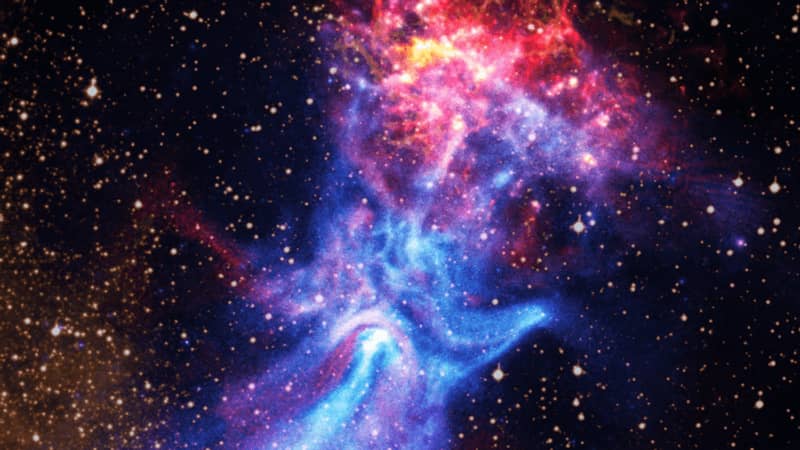NASA's telescopes and radio waves capture a mysterious 'cosmic hand' pulsating in space

An international team of astronomers has unveiled a stunning cosmic image of a giant gas cloud shaped like an outstretched human hand in space, appearing to touch a glowing red cloud. The new composite image is the result of merging data collected from NASA's Chandra X-ray Observatory and the Australian Telescope Compact Array (ATCA), providing an unprecedented view of the remnants of a star that exploded thousands of years ago.
At the center of this majestic scene lies a pulsar _a special type of neutron star_ no larger than a small city, with a diameter of about 12 miles, yet it boasts unique characteristics as it spins around itself seven times per second and generates a magnetic field 15 trillion times stronger than Earth's.
According to researchers, this pulsar formed after its parent star exhausted its fuel, causing it to collapse in on itself before exploding outward in a supernova, scattering debris into space. The extreme rotational speed and immense magnetism of the remaining core have turned it into one of the strongest particle generators in the galaxy.
The scientists used an advanced color composition to reveal the structure of the nebula, where the colors blue, orange, and yellow represent X-ray data, while red indicates radio data, and the golden color signifies visible hydrogen gas in optical light.
This research work was published in the The Astrophysical Journal led by researcher Shou Ming Zhang from the University of Hong Kong, with contributions from other researchers from the same university and the Italian National Institute for Astrophysics. It is noted that the Chandra Observatory is operated by NASA's Marshall Space Flight Center, while the scientific operations are overseen by astronomical research centers in Massachusetts.